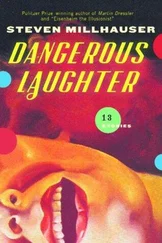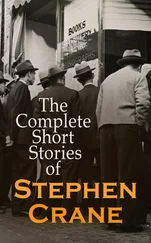Eisenheim was not without rivals, whose challenges he invariably met with a decisiveness, some would say ferocity, that left no doubt of his self-esteem. Two incidents of the last years of the century left a deep impression among contemporaries. In Vienna in 1898 a magician called Benedetti had appeared. Benedetti, whose real name was Paul Henri Cortot, of Lyon, was a master illusionist of extraordinary smoothness and skill; his mistake was to challenge Eisenheim by presenting imitations of original Eisenheim illusions, with clever variations, much as Eisenheim had once alluded to his predecessors in order to outdo them. Eisenheim learned of his rival’s presumption and let it be known through the speaking portrait of a devil that ruin awaits the proud. The very next night, on Benedetti’s stage, a speaking portrait of Eisenheim intoned in comic accents that ruin awaits the proud. Eisenheim, a proud and brooding man, did not allude to the insult during his Sunday night performance. On Monday night, Benedetti’s act went awry: the wand leaped from his fingers and rolled across the stage; two fishbowls with watertight lids came crashing to the floor from beneath Benedetti’s cloak; the speaking portrait remained mute; the levitating lady was seen to be resting on black wires. The excitable Benedetti, vowing revenge, accused Eisenheim of criminal tampering; two nights later, before a packed house, Benedetti stepped into a black cabinet, drew a curtain, and was never seen again. The investigation by Herr Uhl failed to produce a trace of foul play. Some said the unfortunate Benedetti had simply chosen the most convenient way of escaping to another city, under a new name, far from the scene of his notorious debacle; others were convinced that Eisenheim had somehow spirited him off, perhaps to hell. Viennese society was enchanted by the scandal, which made the round of the cafés; and Herr Uhl was seen more than once in a stall of the theater, nodding his head appreciatively at some particularly striking effect.
If Benedetti proved too easy a rival, a far more formidable challenge was posed by the mysterious Passauer. Ernst Passauer was said to be Bavarian; his first Viennese performance was watched closely by the Austrians, who were forced to admit that the German was a master of striking originality. Passauer took the city by storm; and for the first time there was talk that Eisenheim had met his match, perhaps even — was it possible? — his master. Unlike the impetuous and foolhardy Benedetti, Passauer made no allusion to the Viennese wizard; some saw in this less a sign of professional decorum than an assertion of arrogant indifference, as if the German refused to acknowledge the possibility of a rival. But the pattern of their performances, that autumn, was the very rhythm of rivalry: Eisenheim played on Sunday, Wednesday, and Friday nights, and Passauer on Tuesday, Thursday, and Saturday nights. It was noted that as his rival presented illusions of bold originality, Eisenheim’s own illusions became more daring and dangerous; it was as if the two of them had outsoared the confines of the magician’s art and existed in some new realm of dextrous wonder, of sinister beauty. In this high but by no means innocent realm, the two masters vied for supremacy before audiences that were increasingly the same. Some said that Eisenheim appeared to be struggling or straining against the relentless pressure of his brilliant rival; others argued that Eisenheim had never displayed such mastery; and as the heavy century lumbered to its close, all awaited the decisive event that would release them from the tension of an unresolved battle.
And it came: one night in mid-December, after a particularly daring illusion, in which Passauer caused first his right arm to vanish, then his left arm, then his feet, until nothing was left of him but his disembodied head floating before a black velvet curtain, the head permitted itself to wonder whether Herr “Eisenzeit,” or Iron Age, had ever seen a trick of that kind. The mocking allusion caused the audience to gasp. The limelight went out; when it came on, the stage contained nothing but a heap of black cloth, which began to flutter and billow until it gradually assumed the shape of Passauer, who bowed coolly to tumultuous applause; but the ring of a quiet challenge was not lost in the general uproar. The following night Eisenheim played to a packed, expectant house. He ignored the challenge while performing a series of new illusions that in no way resembled Passauer’s act. As he took his final bow, he remarked casually that Passauer’s hour had passed. The fate of the unfortunate Benedetti had not been forgotten, and it was said that if the demand for Passauer’s next performance had been met, the entire city of Vienna would have become a magic theater.
Passauer’s final performance was one of frightening brilliance; it was well attended by professional magicians, who agreed later that as a single performance it outshone the greatest of Eisenheim’s evenings. Passauer began by flinging into the air a handful of coins that assumed the shape of a bird and flew out over the heads of the audience, flapping its jingling wings of coins; from a silver thimble held in the flat of his hand he removed a tablecloth, a small mahogany table, and a silver salver on which sat a steaming roast duck. At the climax of the evening, he caused the properties of the stage to vanish one by one: the magician’s table, the beautiful assistant, the far wall, the curtain. Standing alone in a vanished world, he looked at the audience with an expression that grew more and more fierce. Suddenly he burst into a demonic laugh, and reaching up to his face he tore off a rubber mask and revealed himself to be Eisenheim. The collective gasp sounded like a great furnace igniting; someone burst into hysterical sobs. The audience, understanding at last, rose to its feet and cheered the great master of illusion, who himself had been his own greatest rival and had at the end unmasked himself. In his box, Herr Uhl rose to his feet and joined in the applause. He had enjoyed the performance immensely.
Perhaps it was the strain of that sustained deception, perhaps it was the sense of being alone, utterly alone, in any case Eisenheim did not give another performance in the last weeks of the fading century. As the new century came in with a fireworks display in the Prater and a hundred-gun salute from the grounds of the Imperial Palace, Eisenheim remained in his Vienna apartment, with its distant view of the same river that flowed through his childhood city. The unexplained period of rest continued, developing into a temporary withdrawal from performance, some said a retirement; Eisenheim himself said nothing. In late January he returned to Bratislava to attend to details of his father’s business; a week later he was in Linz; within a month he had purchased a three-story villa in the famous wooded hills on the outskirts of Vienna. He was forty or forty-one, an age when a man takes a hard look at his life. He had never married, although romantic rumors occasionally united him with one or another of his assistants; he was handsome in a stern way, wealthy, and said to be so strong that he could do thirty knee-bends on a single leg. Not long after his move to the Wienerwald he began to court Sophie Ritter, the twenty-six-year-old daughter of a local landowner who disapproved of Eisenheim’s profession and was a staunch supporter of Lueger’s anti-Semitic Christian Social party; the girl appears to have been in love with Eisenheim, but at the last moment something went wrong, she withdrew abruptly, and a month later married a grain merchant from Graz. For a year Eisenheim lived like a reclusive country squire. He took riding lessons in the mornings, in the afternoons practiced with pistols at his private shooting range, planted a spring garden, stocked his ponds, designed a new orchard. In a meadow at the back of his house he supervised the building of a long low shedlike structure that became known as the Teufelsfabrik, or Devil’s Factory, for it housed his collection of trick cabinets, deceptive mirrors, haunted portraits, and magic caskets. The walls were lined with cupboards that had sliding glass doors and held Eisenheim’s formidable collection of magical apparatus: vanishing bird-cages, inexhaustible punch bowls, devil’s targets, Schiller’s bells, watch-spring flowers, trick bouquets, and an array of secret devices used in sleight-of-hand feats: ball shells, coin droppers, elastic handkerchief-pulls for making handkerchiefs vanish, dummy cigars, color-changing tubes for handkerchief tricks, hollow thumb-tips, miniature spirit lamps for the magical lighting of candles, false fingers, black silk ball-tubes. In the basement of the factory was a large room in which he conducted chemical and electrical experiments, and a curtained darkroom; Eisenheim was a close student of photography and the new art of cinematography. Often he was seen working late at night, and some said that ghostly forms appeared in the dim-lit windows.
Читать дальше












